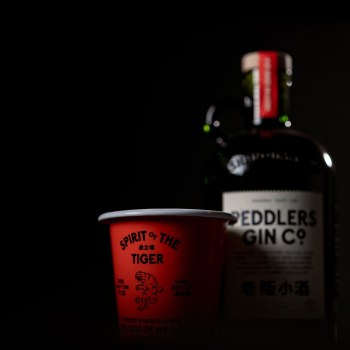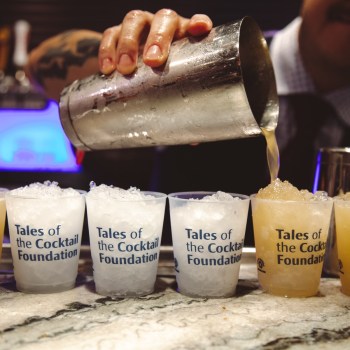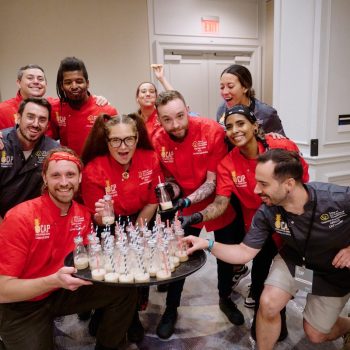I recently had the pleasure of sitting down to chat with Lark CEO Sash Sharma, it turned into a two-hour conversation covering a wide range of topics. This is the second in the series of stories from that interview, when we talked about some of the differences, and yet similarities, between the family business of William Grant and Sons and the Lark family business, which is listed on the Australian Stock Exchange.
While there are huge responsibilities in both businesses, Sash outlined some of the key differences that come from a business that was formed in 1992 and one that has been operating since 1887.
“The greatest difference is the public eye. William Grant’s is a family business that says ‘do this’ or ‘I want this, I’d like you to do this, and I’d like you to do it tomorrow’, no problem. Having a responsibility to a family over generations is an incredible responsibility, but it’s also something that’s been built over time.
“Now you’re at Lark and you’ve got thousands of shareholders, and you are a responsibility to each and every one of them. That responsibility is something that you have to take very seriously. And for me, it’s a level of accountability and responsibility for being able to deliver what you’ve said you’re going to do. Because you’re dealing with people’s savings, you’re dealing with mum and dads, you’re dealing with institutional investors.
“You have a family company which is absolutely and effectively going in one direction, versus a public company which has different shareholders, different views, with different time horizons and with different expectations. Managing that and getting them very clear about where we’re going is really important, because we’re a public company, you have a choice, and if you like the strategy, great. If you don’t you have a choice.
“We are in tougher times but at William Grant’s they have been through war, hard times, economic downturns and these things go in cycles and when they turn, great. Now you have to manage that with the ethos of a family company, but also apply it to the public.
“Irrespective of structure, whiskey is a long term game. The previous few years at Lark have been about laying down whisky. I’m benefiting from that whisky being laid down and now I can go out and sell it to the world. And for me, that’s the exciting part, because we can now put it into the hands of consumers.”
Fantastic optionality
Sash added: “You build a business on great foundations. Lark is an incredible brand that just needs some really strong direction and some priorities being set. I think laying out those priorities to our investor base (in October) was really important. They were very well supported by Lark’s highly credentialed Board, now we are moving into execution mode and now we have to deliver.
“We have to deliver in a market where the global cycle of consumer confidence, cost of living all have upward pressures, but this will pass. So it’s a fantastic time to lay your foundations, trading where we are today but be ready to be opportunistic when the doors open. History says we won’t stay in a downward spiral, so at this time we have to build awareness, we have to build our credentials, particularly abroad, but also solidify our base at home.”
In terms of the base at home, some challenges for Lark have come around its cost and its bottle size, Sash said that the business currently has around 2.4 million litres of whisky in barrels, something that gives him and Lark “fantastic optionality”.
“Is 700ml on the horizon, is it something we are thinking about? Of course it is.
Sash Sharma, Lark Distilling Co
“Take out Bijou in China, I think [Australian whisky is] the only real spirit product, anywhere in the world, that is in 500mls. So, it’s not about what Lark wants, we live and die by consumers, and we have to think about consumers navigating the spirit aisles and looking at 500 versus 700ml options.
“We went out to the market last year and talked about a re-stage and in that re-stage we talked about what is the price tiering of our business? We have the opportunity to come down and go up. We launched a 1911 Tawny and that is at $5000 a bottle. Are we going to sell 2.4 million litres at $5000 a bottle? No, we are not but it plays a really important role in providing us with credentials, reassurance, a halo to our business.
“But moving up and down, tapping into a new consumer base is absolutely in our thoughts.”
He added: “Definition-wise we play in a place called Prestige and Prestige Plus, we can play in Ultra-Premium, which is give-or-take $150-plus. We can play there as we have shown that with Symphony, but we are absolutely thinking about our architecture, we are thinking about bottle formats. What we are doing is making sure we stage it, because we want to make sure we are doing it the right way.
“Whether it is cost of living, or just consumer choice, particularly as we look further afield outside of our home base or choices may be made for you because of your consumer and not because of what you want.”
Economies of scale
As a follower of Australian whisky, I have seen people pop-up in various groups and say ‘I understand economies of scale, but why is Australian whisky so expensive?’ The simple answer is ‘well, clearly you don’t understand economies of scale,’ so I put this to Sash and he put it into perspective from Lark’s production capabilities.
“Glenfiddich has the capacity to produce over 20,000,000 litres per year, Macallan is around 15,000,000 litres per year, Yamazaki’s annual production capacity is six million litres. We make about 100,000 litres per year. So production-wise we have got a genuine story on rarity and scarcity. We have 2.4 million litres in barrels, obviously that is not all whisky, some of it is new make, and my job is to turn that in cash, turn it into and the proof that we will be successful overseas.
“That’s a no-brainer, we have got beautiful liquid and that’s what I should be doing and that helps with cash, that helps us re-invest in the brands. It gives us the opportunity to go out and really make a statement, which is important.”



